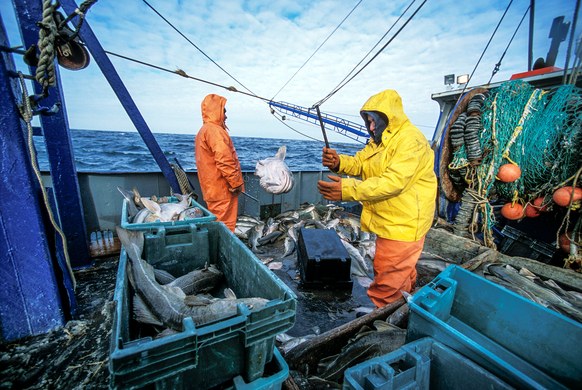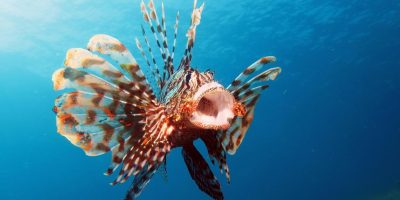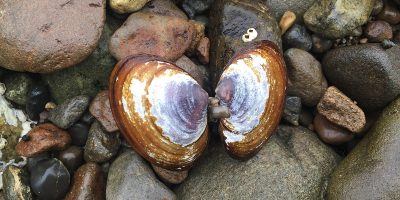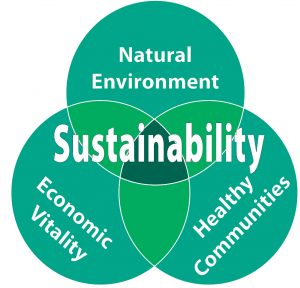A fishing quota is simply the number of fish that a governing body decides can be caught over a given time. Fishing quotas exist for everything from albacore to zander and come in many different flavors. But the fundamental questions that need to be answered in order to set a healthy and fair quota are always the same: “How many fish can be fished?” and “Who gets to fish them?”
There seems to be an almost mystical aura around the process of setting a fishing quota, though. How did they come up with a number like that? Is it all just guesswork? Why doesn’t it stay the same every year? Well, truth be told it isn’t just guesswork; people dedicate their entire careers to estimating the right amount of fish to take, consulting stakeholders, and enforcing the quota after it is in place.
Who gets to decide?
Fisheries management strategies vary widely around the world so for simplicity’s sake we’ll just take a look at the United States. In the U.S., the guidelines for how fisheries should be managed were first outlined in the 1976 Magnusun-Stevens Fishery Conservation and Management Act (MSA). The MSA manages fishing in U.S. federal waters and relies on eight regional fishery management councils to set fishing quotas for their respective regions.
Every one of these management councils conducts things a little differently. The species that are fished, the political climate, and the social structure of a fishery all influence how it is managed, so let’s take a closer look at just one of these councils: the Pacific Fishery Management Council. Specifically we’ll look at the steps that go into setting quotas for Pacific groundfish.
The Pacific Groundfish Quota Cycle
“Groundfish” is a general term that refers to species that spend their adult lives on or near the ocean bottom and include fish like cod, pollock, halibut, and flounder. The management of these species in the Pacific works on a biennial cycle: management measures are set for a two-year period and are adjusted through routine in-season actions.
Here’s what the Pacific Fishery Management Council’s groundfish timeline looks like at a glance:
Year 1: September
- The Groundfish Management Team (GMT) and the Scientific and Statistical Committee (SSC) get together and figure out what new information to incorporate for the next fishing cycle (e.g. observer data from the previous year, proposed changes to fishing methods, and stock assessments)
- The GMT and the Groundfish Advisory Subpanel (GAP) meet and review the current fishery status and use this to make in-season recommendations for the Council to implement for the current year (year 1)
- The Council meets and adopts a range of acceptable biological catches (ABCs)
Year 1: November
- The GMT and GAP look at the current fishery statuses and make recommendations to the council for in-season action in years 1 and 2
- Coastal Treaty Tribes make requests for their allocations to the Council for years 3 and 4
- The GMT and GAP make management recommendations to the Council for years 3 and 4
- The Council decides on a preliminary range of harvest levels
Year 2: April
- The GMT and GAP continue to provide recommendations to the Council for years 3 and 4
- The Council adopts preliminary management measures for public review
- The Council adopts final harvest specifications for years 3 and 4
Year 2: June
- GMT and GAP provide recommendations to the Council on harvest specifications and management measures for years 3 and 4
- Council recommends in-season management adjustments for year 2
- Council adopts final management measures for years 3 and 4
This timeline is a simplified version of what the Pacific Fishery Management Council actually does but the basic steps are there. Even at a glance we can tell that there are a lot of different groups involved. Throughout the whole process there is involvement from a management team, a scientific committee, an advisory subpanel, at-sea observers, coastal tribes, and the general public.
While no fishery is managed perfectly, relative to the rest of the world the U.S. does a pretty good job. In fact, there is strong evidence that some fish stocks are being underexploited and still have untapped economic potential (without much risk of jeopardizing populations). This is not to say that there aren’t populations being overfished, but it certainly doesn’t apply to all of them.
What makes a quota “sustainable?”
A sustainable quota has to meet the requirements of all three pillars of sustainability: environmental, economic, and social.
An environmentally sustainable quota means that the amount fish being taken at time still leaves enough left to maintain the population; an economically sustainable quota must provide enough fish so that the cost of fishing does not outweigh the value of the fish being caught; and a socially sustainable quota needs to be accepted by the community and not violate any social contracts set by society.
In a perfect world, a quota would be economically beneficial, environmentally friendly, and socially acceptable. But different stakeholders have different values and unfortunately there is rarely one solution that works perfectly for everyone.
So why go into fisheries management?
If there isn’t one solution to fix the problem then what’s the point?
I think what draws me to fishery science is its complex and collaborative nature. Everyone involved has to use their expertise to find a resolution every season and new information is constantly changing the conversation. A fishing quota can only be sustainable if multiple perspectives are considered.
If there was already an answer to these problems then we could go home and never worry about fisheries management again. But there isn’t one answer, and I think that’s one of the most important things I’ve learned while studying fishery science. Managing a fishery requires constant conversation — the job is never truly done.
References and further reading:
Hilborn, R., and C. Costello. 2018. The potential for blue growth in marine fish yield, profit and abundance of fish in the ocean. Marine Policy 87:350–355.
NOAA photo: https://www.nwfsc.noaa.gov/research/divisions/fram/observation/
U.S. Regional Fishery Management Councils: http://www.fisherycouncils.org/









Leave a Reply